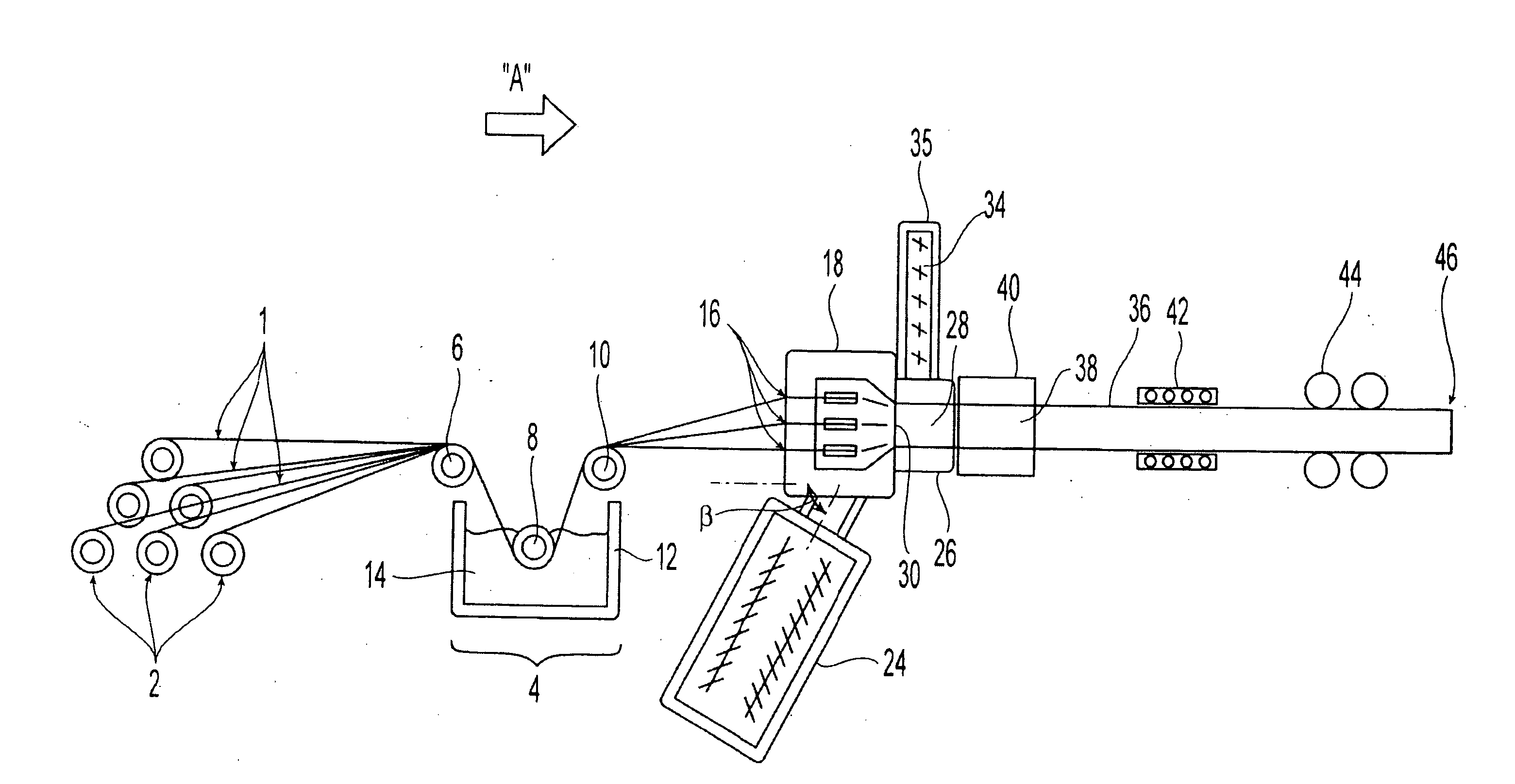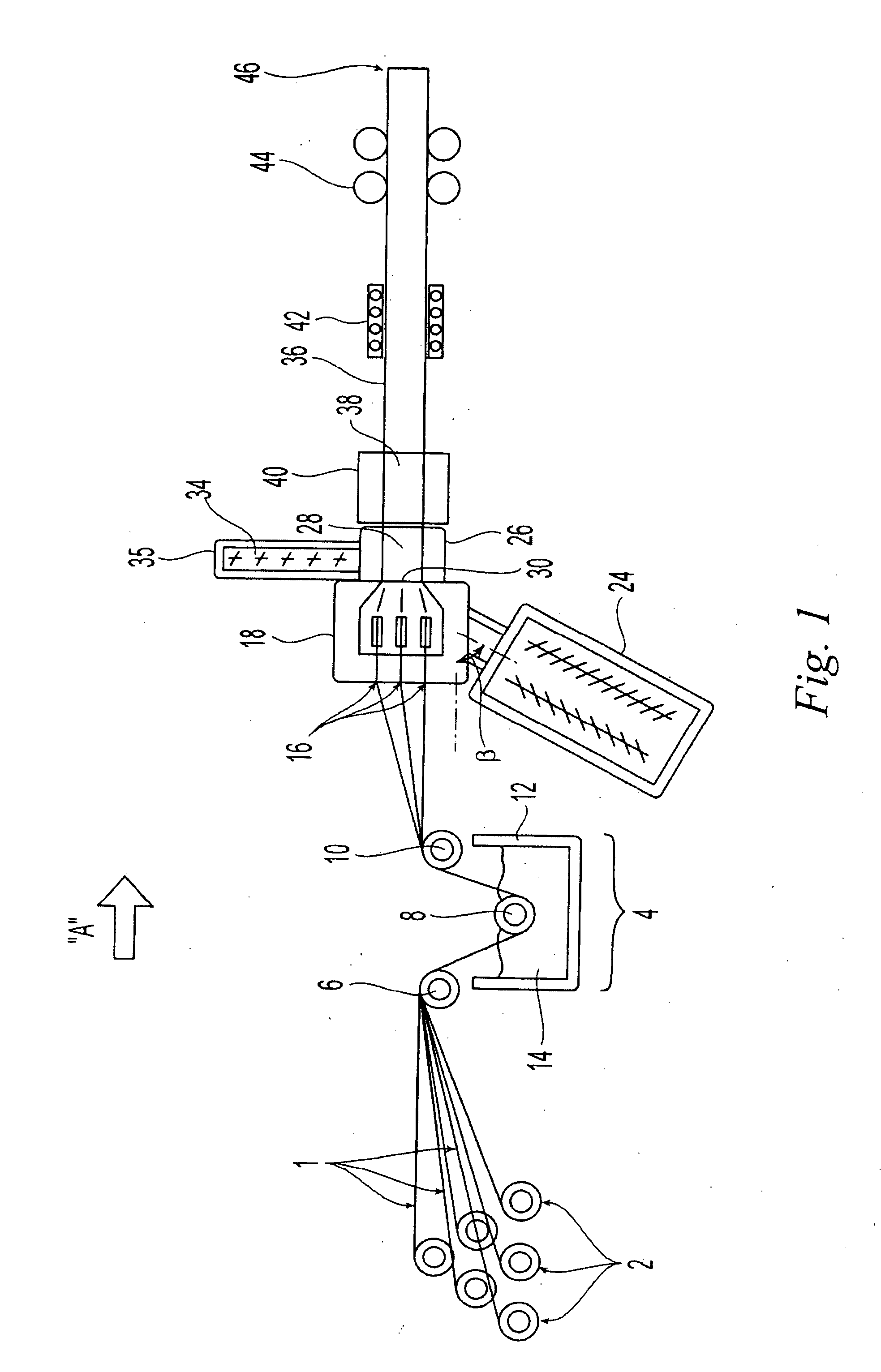System and die for forming a continuous filament reinforced structural plastic profile by pultrusion/coextrusion
a technology of continuous filament and structural plastics, applied in the field of reinforced plastic composite materials, can solve the problems of pvc fence and rail materials, prone to corrosion attack, and thermoplastics that do not have the strength and rigidity of wood and lumber, etc., and achieve the effect of strengthening the thermoplastic structur
- Summary
- Abstract
- Description
- Claims
- Application Information
AI Technical Summary
Benefits of technology
Problems solved by technology
Method used
Image
Examples
example
[0078] A PVC-Glass fiber / PVC Plastisol-Acrylic cap stock profile extrusion was carried out using a 3.5″ Davis Standard single screw extruder as a main extruder for PVC substrate extrusion, a three stage 0.705″×0.705″ crosshead die, with a square hole in the center, a 1.5″ Polytruder single screw extruder, a vacuum calibration system, a fiber creel, and a plastisol resin bath. The substrate resin (second resin 22) was a rigid PVC material having a composition as shown in the table below.
Parts byMaterialweightSource of materialOxyVinylsPolyvinyl100.00OxyVinyls, Dallas, TX216chlorideMark 1900Stabilizer1.50Chemtura Corporation,Middlebury, CTKronos 2073Titanium1.00Kronos, Inc., Cranbury, NJdioxideRheolub 250Lubricant0.90Honeywell, Morristown, NJAC 629 ALubricant0.15Honeywell, Morristown, NJLoxiol G60Lubricant0.50Cognis, Ambler, PACa StCalcium0.50stearateParaloid KFlow aid6.50Rohm and Haas, Spring400House, PAOmyacarbCalcium3.00Omya Inc., Alpharetta,UFTcarbonateGeorgiaTOTAL phr114.05
The...
PUM
| Property | Measurement | Unit |
|---|---|---|
| residence time | aaaaa | aaaaa |
| residence time | aaaaa | aaaaa |
| residence time | aaaaa | aaaaa |
Abstract
Description
Claims
Application Information
 Login to View More
Login to View More - R&D
- Intellectual Property
- Life Sciences
- Materials
- Tech Scout
- Unparalleled Data Quality
- Higher Quality Content
- 60% Fewer Hallucinations
Browse by: Latest US Patents, China's latest patents, Technical Efficacy Thesaurus, Application Domain, Technology Topic, Popular Technical Reports.
© 2025 PatSnap. All rights reserved.Legal|Privacy policy|Modern Slavery Act Transparency Statement|Sitemap|About US| Contact US: help@patsnap.com



